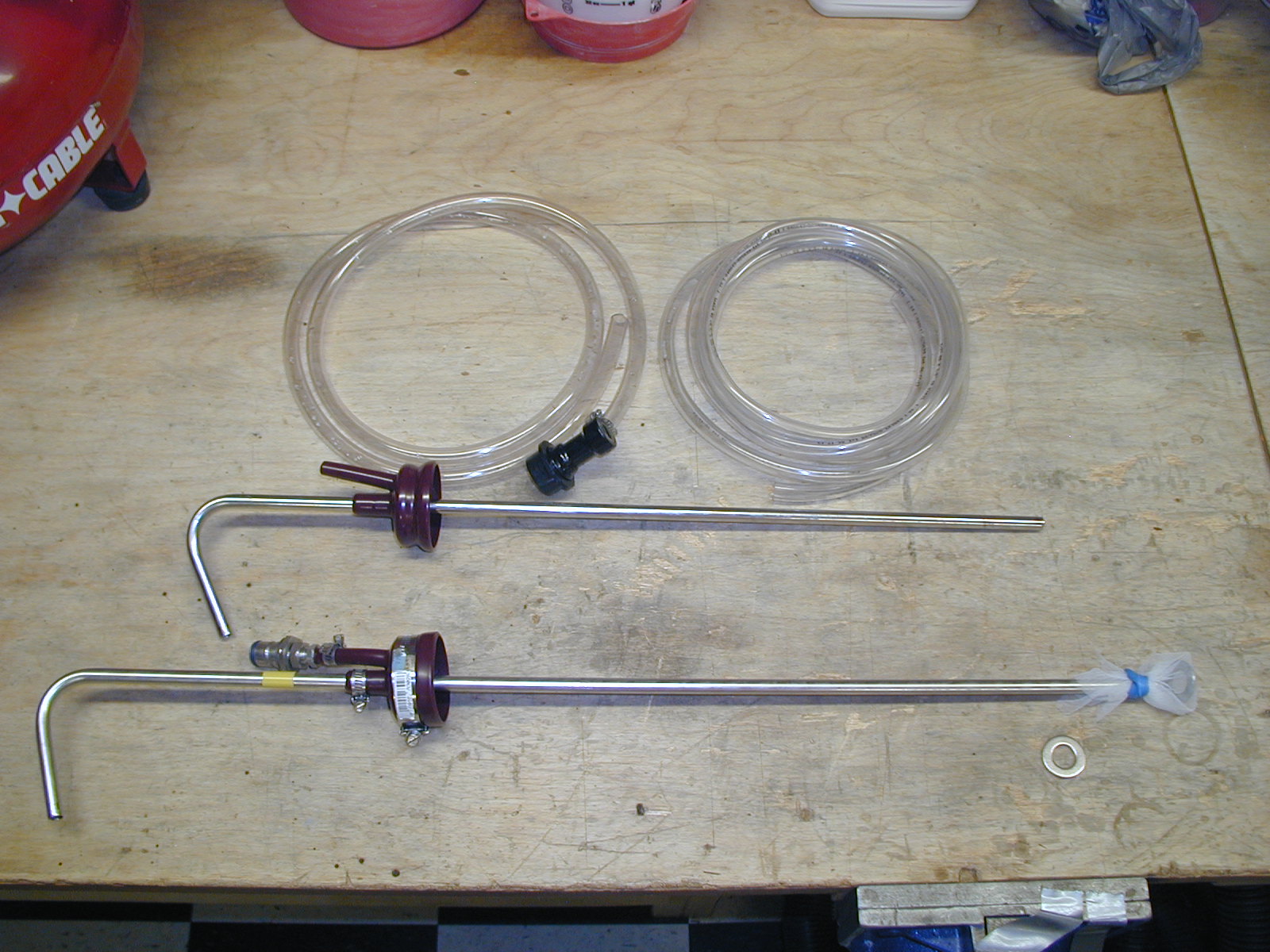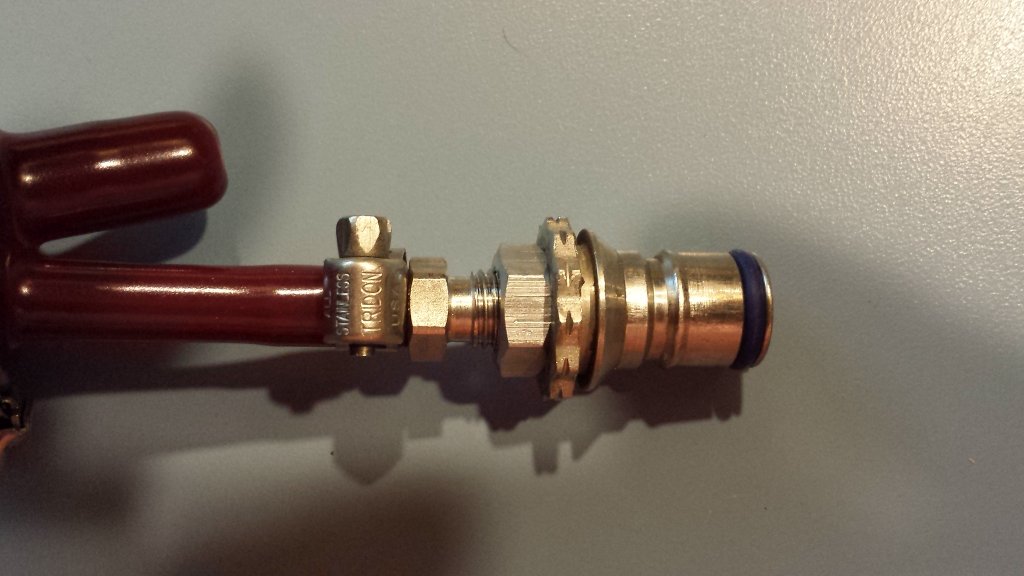TAK - it sounds like you and day_trippr use a similar method. I've been using CO2 to siphon from a carboy to keg, and I fill the keg through the beer-out post (so that it fills from the bottom up), but I've never transferred into a sealed keg. Can you explain how you purge the keg and push out the StarSan with CO2? Thanks.
Well...
Fill it with Starsan, close it, hook to the Co2, flush it a few times
^ This certainly works, and would be good, but I think a few extra steps is even better. Otherwise, the gas that's left above the StarSan is only ever, at best, a dilute mix of CO2 and air .
Here's what I do:
1- I fill the keg up all the way with StarSan, so it's just overflowing out the top. Then seal the lid on.
2 - I fill up a plastic water bottle with StarSan. I put a carbonator cap on that. Hook up a gas disconnect to the cap, run a short length of tube, ending with a liquid disconnect. Purge the rest of that tube with StarSan.
3 - Hook up the water bottle to the liquid out post on the keg.
4 - Squeeze the bottle and at the same time: pull the pressure release valve until StarSan comes out.
5 - Squeeze the bottle and at the same time: hook up a gas-out disconnect to that post, very briefly, until StarSan comes out.
* At this point, you may think its 100% full. However, the pressure release valve on the lid actually dips down a bit, leaving some space above it. If you shake the keg, you can hear it still sloshes around a bit, which means air. Thus...
6 - Tilt the keg upside down to get that air bubble isolated. Then, slowly tilt back with the gas-out post upward. Stop with the keg tilted at an angle, about 45 degrees. That way that air bubble is sitting right at the gas-out post.
7 - Squeeze the bottle and at the same time: remove the gas-out post from the keg, and pull out the short gas dip tube. At first StarSan foam will flow out, then it will turn to pure liquid. At that time, while still squeezing that bottle, reattach the gas-out post.
* At this point, if you shake the keg, you won't hear a darn thing because it's 100% full.
8 - Push out the StarSan (CO2 in the gas post, StarSan out the liquid post). Personally, I keep all this StarSan in a couple buckets to reuse.
It sounds like a lot, but after doing it a couple times, it's quick and easy. I just did this yesterday to one keg. I know I want to rack a carboy this week. So now I have a sanitized keg sitting in queue, filled with CO2 for whenever I decide to move the beer.
















![Craft A Brew - Safale S-04 Dry Yeast - Fermentis - English Ale Dry Yeast - For English and American Ales and Hard Apple Ciders - Ingredients for Home Brewing - Beer Making Supplies - [1 Pack]](https://m.media-amazon.com/images/I/41fVGNh6JfL._SL500_.jpg)










































